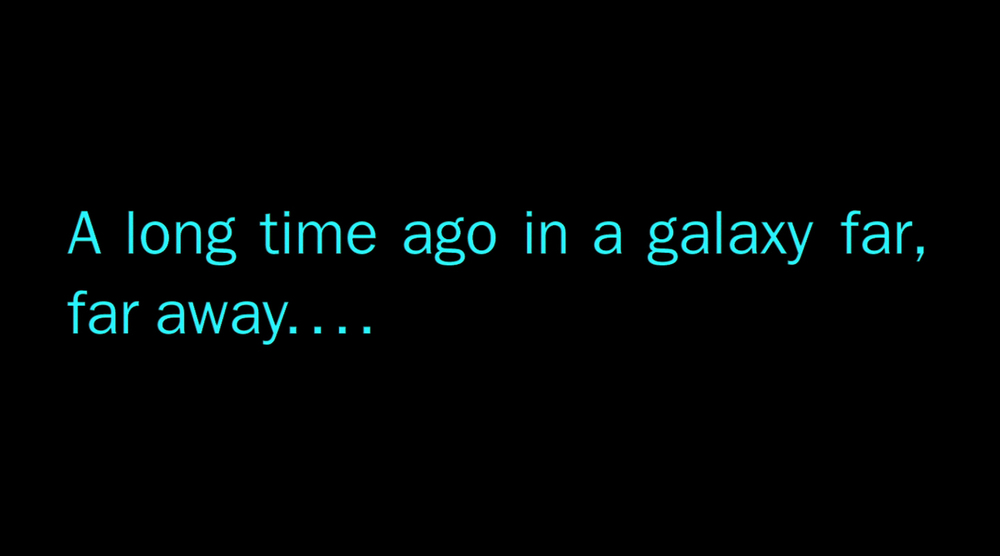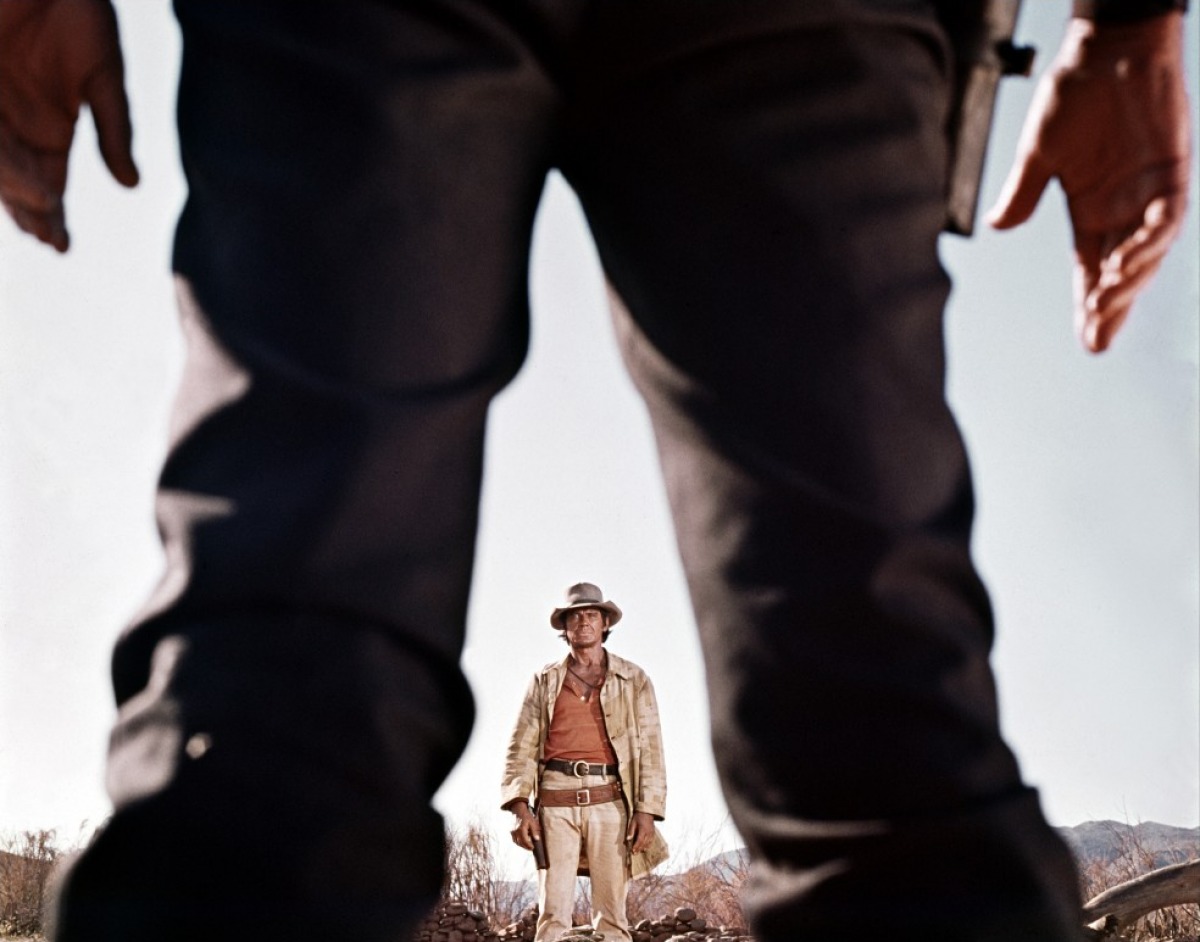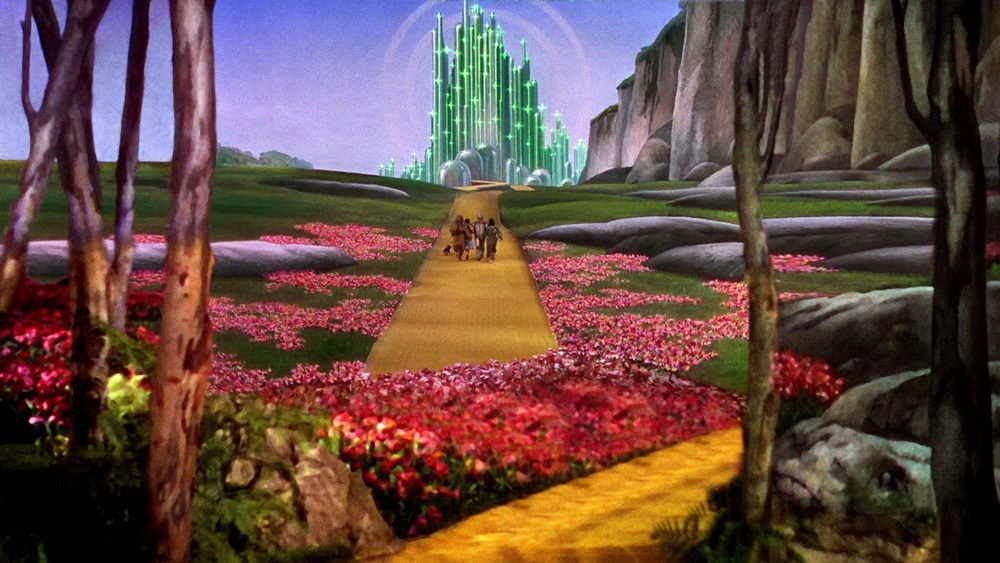Whatever else Lucas has done, or will do, in his lifetime, he will be remembered primarily for this, his space fairy tale.
Lucas has done a lot to position Star Wars, and even his own personal story, as well as the story of his companies, as the great modern rebirth of mythology, by producing documentaries, hosting TV series talks with Bill Moyers, and doing museum exhibits that talk about the connection to classic mythology. Nary a mention is made of Star Wars today without a wink and a pat on the back of Joseph Campbell, who devoted his life to the study of mythology and anthropology, and who is perhaps most well known for being the author of The Hero With a Thousand Faces (1949), a book which Lucas has often called one of his primary influences in structuring his grand space opera; his great insight, which caused the flailing pieces to fall at long last, naturally into place.
Lucas’s work on telling his own story as the struggling, independent filmmaker, much maligned by the establishment, as well as the story of how he created the industry-changing companies that would give birth to his great vision, is in many ways as great a story as Lucas has ever told on the screen. In the case of the Star Wars creation mythology, he cast himself as an apprentice, and Joseph Campbell as his mentor, binding together the colorful, adolescent sources—Flash Gordon, Valérian, Mœbius and so on—which truly inspired Star Wars, with the high-brow world of academia and the great truth of Mythology, with which it had collided, though arguably mostly by accident.
It is fitting then to start this analysis of the Star Wars creation mythology by looking at the relationship between it and Joseph Campbell, who the creation myth has it, influenced the young Lucas to base the construction of his grand space saga on Campbell’s lifelong work in finding similarities between different cultures’s folklore and fairy tales. Work he famously wrote about at length in his book The Hero With a Thousand Faces, a book as linked with Star Wars as Flash Gordon or Akira Kurosawa have become, and which inevitably finds mention at every turn, helping Star Wars rise out of the entertainment slum in which it might otherwise have found itself forever relegated.
Since Star Wars was first released, the bond between it and Campbell’s work, has helped build a strong relationship which in turn has helped convince parents and teachers everywhere that this wacky space fantasy has more to it than meets the eye. So convincing an argument has it been, that many books, essays, and talks have been built on the very notion that Star Wars in fact is deep down a grand unifying mythology, from which parables can be drawn to everything from christianity to hinduism and God, very fittingly, knows what else. And what a great story that is; how cheap comics, science fantasy serials and war stories which Lucas found so engrossing as a kid, could be combined with such high-brow, academically respected work as that of Joseph Campbell, as well as famed child psychologist Bruno Bettelheim.
All of which isn’t to say that Star Wars isn’t a piece of modern mythology, or that it doesn’t adhere to the monomythic structure outlined by Campbell in his work. Rather it is the distinction between whether this was a conscious decision Lucas made during the writing of the Star Wars screenplays or not. The official story is that it was, but there is an argument to be made that it might well not have been, and that Campbell’s influence wasn't consciously applied until at the earliest during the writing of The Empire Strikes Back.
This may seem like an esoteric discussion, but it’s key to understanding the foundations for what eventually became Star Wars.
If you have followed Star Wars to any extent, and I can’t imagine why you’re reading this if you haven’t, then you will have come across the Campbell connection many times, so much so that it’s very likely that it seems entirely natural that the two be connected in the way that they are today.
Forget for a moment the Star Wars that exists today, and recall, or imagine, the Star Wars of the late 70s. It’s the film that came before the hundreds of novels, the Marvel comics, the board-, computer-, and roleplaying games, before the bed sheets, the posters, the shirts, watches, sneakers, waste paper baskets, coloring books, costumes, Muppet show appearance, Burger King commercials, Moleskine notebooks, and so on, and so forth. It’s a Star Wars in which Vader isn’t Luke’s father, in which Leia isn’t Luke’s sister, and in which the force is less superpower, more magical intuition and party tricks. When the worlds of Star Wars were dusty backwater planets inhabited by hermits, gunslingers and struggling farmers. Go back to the very beginning, when Star Wars was simply Star Wars, when the first words on the screen told you that “A long time ago, in a galaxy far, far away….”, this, the very first we see of Star Wars, unmistakable tells us that what we’re about to see, is a fairy tale.
Today the word mythology is thrown at everything from the Marvel multiverse, to Donald Duck and Twilight. If it has a handful of characters and some sort of sprawling narrative, a mythology it is. As a term in popular culture it has become meaningless, in that it is simply used to encircle all the fiction of a given franchise or origin. And while these concepts defy exact definition, this is not what mythology used to mean. Karen Armstrong:
In the pre-modern world, mythology was indispensable. It not only helped people to make sense of their lives but also revealed regions of the human mind that would otherwise have remained inaccessible. It was an early form of psychology. The stories of gods or heroes descending into the underworld, threading through labyrinths and fighting monsters, brought to light the mysterious workings of the psyche, showing people how to cope with their interior crisis. When Freud and Jung began to chart the modern quest for the soul, they instinctively turned to classical mythology to explain their insight, and gave old myths a new interpretation.
— ‘A Short History of Myth’ by Karen Armstrong, Chapter 1
When we think of fairy tales, what springs to mind are most often stories the likes of Beauty and the Beast, Cinderella, The Emperor’s New Clothes, The Gingerbread Man, Hansel and Gretel, and so on, and so forth; far-fetched, often involving fairies of course, as well as dwarves, trolls, goblins, witches and wizards, princes, princesses and common farm folk off on adventure, or in some other manner involved with any of the above. Supernatural elements are common, but not necessary for a story to be a fairy tale, rather they are often simple tales, drawn from folklore at one time or another, short and easy to remember, usually capped off by a moral of some sort, but rarely of any significant depth, which the characters in them usually reflect: outward appearances do not matter, don’t trust strangers, and don’t be anyone's a fool; that sort of thing.
Myth on the other hand is metaphor. It tries to explain why the world is the way it is, both the outer world around us, as well as the inner world within us. The mythology, fairy tale, folklore and fable definitions all overlap and intermix, as do the arguments for what belongs where and why, but for the purposes of this argument, this is the distinction that best describes the differences between the two. Myth is metaphor, fairy tales are morality.
While the first Star Wars film has certain mythic and spiritual qualities, it’s fair to say that it is—in its story of a farm boy who meets a wizard, rescues a princess and stumbles into an intergalactic war – a fairy tale first and foremost. “When we work together, we can vanquish evil,” might be its moral. And if we take a closer look at its influences, it could even be argued that this first film was always meant as a fairy tale, and that the mythological turn didn’t come until The Empire Strikes Back.
To wit, Akira Kurosawa’s 1954 film The Hidden Fortress—the entirety of which Lucas used for his first treatment of Star Wars, and from which C–3PO and R2-D2 would be drawn—was a fairy tale story told through the war-torn world of sixteenth century feudal Japan. It has all the stylings of a historic film (in the same way that Star Wars has all the stylings of a science fiction film), yet it has the story and logic of a fairy tale, in which peasants accidentally stumble upon royal gold hidden inside piece of wood, which soon involves them in a princess and her loyal general’s flight through enemy territory. It would not have been out of place opening with “A long time ago…”.
As is also covered more in-depth elsewhere, Sergio Leone often said of his Italian westerns, starting with A Fistful of Dollars, that they were meant as fairy tales for grown-ups. Like Kurosawa’s films, they told a fairy tale-like story in a violent, historic setting. His final two films would even adopt “Once Upon a Time” for their titles (In The West and In America, respectively).
Lucas would draw on them in a more subtle manner than some of his other major influences, for the rundown look and style of the locations, later for the ‘bounty killer’ Boba Fett, and perhaps most of all the very idea of adapting a Kurosawa film by transposing it to another genre. Kurosawa himself was no stranger to this idea, with films like Throne of Blood and Ran based at least in part on Shakespeare, and many more also adapted from other existing material. But it might as well have been Sergio Leone’s transposition of Yojimbo’s feudal Japan to A Fistful of Dollars’ American west that brought home the idea to Lucas.
It was far from an overnight epiphany, as the progression of the widely different drafts proves, but Lucas eventually ended up taking some of his basic building blocks from the 1939 production of what’s often thought of as the first proper American fairy tale of its own, The Wizard of Oz, like the young girl living on a farm with an aunt and an uncle, as well as companions (furry and tinny), witches and munchkins.
So on the one hand, the Star Wars that descends from serials, pirate adventures and westerns of Lucas’s youth, is one of pure adventure. Of Buster Crabbe, Burt Lancaster and Errol Flynn. On the other, it descends from these updated fairy tales from Leone and Kurosawa, most of which in their own way had been transposed out of what we traditionally think of as a fairy tale setting. And it is from them that Star Wars got its foundation, not as a grand mythology, but as a grown-up’s fairy tale; a critical distinction in the argument against the accepted story Lucas usually tells of Campbell’s The Hero With a Thousand Faces, and its influence on Star Wars.
The second argument is that Lucas never amounted to much of a student. In fact Dale Pollock, Lucas’s only official biographer, pointed out several times that Lucas had loved comic books, cartoons and serials when growing up, that he hated reading and even as a film maker never took much of an interest in narratives until he started work on Star Wars, preferring to work visually, as he did on his student films and THX 1138, or in a more episodic and character-based manner as he had on American Graffiti.
Looking at Lucas’s many other influences on Star Wars, they are all, as one would expect, films (most from the mid and late 60s), comic books and the occasional science fiction novel, most of which were aimed at the adolescent market. Lucas was many things, but a bookworm wasn’t one of them, which makes it hard to swallow that despite having a definite interest in anthropology and even mythology—which undoubtedly made him aware of Campbell’s work on some level—that Lucas plowed through Campbell’s 400 page tightly packed academic tome, let alone gleaned from it the formula for binding together the disparate elements of Star Wars.
While Star Wars can certainly be forced into the monomyth structure, some liberties have to be taken with the interpretation, whereas if we go back to The Wizard of Oz, arguably one of the primary sources of inspiration for the foundational structure of Star Wars, it on the other hand follows Campbell’s monomyth to a T, despite preceding The Hero With a Thousand Faces ten years.
And remember, here we are talking about the first film only, Star Wars later known as Episode IV: A New Hope, and not about the full trilogy or the saga. Because while Lucas has often claimed that he simply took his early story and chopped it into three pieces, making the first of them into the first film, that was very much not the case, as Michael Kaminski outlined to a staggering degree of detail in his outstanding book The Secret History of Star Wars, and so we should consider this first film a completed story, which must (and does) stand on its own. Though even considering all of the films as one big story, the ‘hero’s journey’ still doesn’t line up particularly well (Luke for instance never returns home to complete the cycle).
Seeing as how Campbell’s work is literally about how the stories of all of times and places are similar because this is how such stories are naturally structured, it begs the question: Is the real reason Star Wars manages to check off some of the monomyth checkboxes because stories of a certain type inevitably have to move along a certain kind of trajectory to achieve drama? And having used similar stories as bits and pieces for his own film, it might well follow that Star Wars itself also inherited their fairytale structures.





